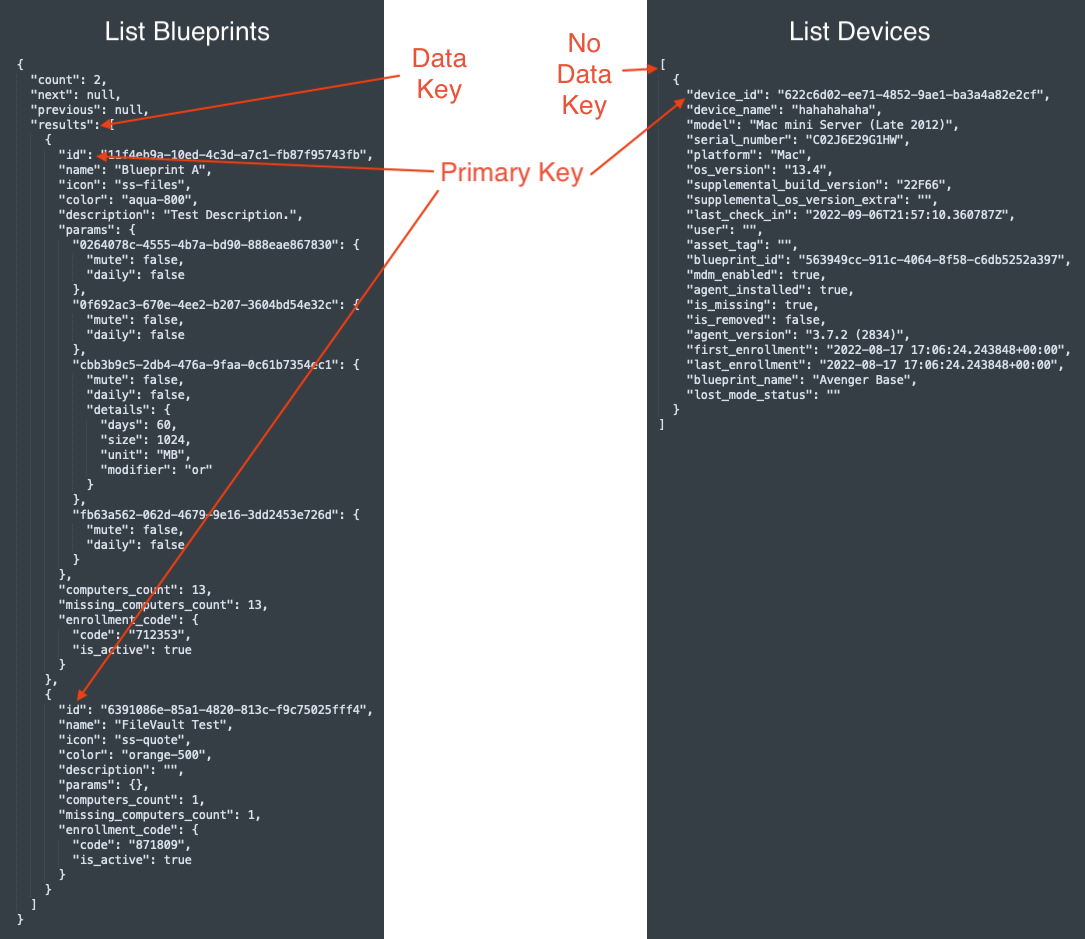- 19 Apr 2024
- 2 Minutes to read
- Print
- DarkLight
- PDF
Kandji
- Updated on 19 Apr 2024
- 2 Minutes to read
- Print
- DarkLight
- PDF
Kandji API
Any instance where an entry in the below configuration has a leading $ represents a parameter that needs to be replaced with a static value.
Parameters in this document:
- $sub_domain - Per Kandji API documentation, you can find your API URL sub-domain in the Settings > Access.
- $base_url - The API Base URL will follow the below formats, depending on your region:
- US - https://$sub_domain.api.kandji.io/api/v1
- EU - https://$sub_domain.api.eu.kandji.io/api/v1
- $resource_name - The endpoint, or resource, that you would like to ingest into Panoply. Details of the value that should be used here can be found in the API Resources section below.
- $api_token - The API Token will provide access to the Kandji API. Documentation on how to generate an API Token can be found here.
API Resources
For a list of API Resources available for Kandji, please refer to the list of endpoints found within their documentation here, where a list of endpoints can be found on the lefthand side of the documentation.
Connector configuration
- Base url: $base_url/$resource_name
Example: If collecting the Blueprints endpoint with a sub-domain of Panoply from the US region, the Base URL would be https://panoply.api.kandji.io/api/v1/blueprints
- Method: GET
- URL Parameters: limit=2500
- Headers: {"Authorization":"Bearer {api_token}"}
- Destination: kandji_$resource_name
Destination table naming convention is ultimately up to you as the data owner. One common structure used for this API is kandji_$resource_name (e.g. when collecting the Blueprints resource, using the Destination of kandji_blueprints)
Authorization
- Authorization Bearer Token
- Token: {api_token}
Variables
| Variable name | Variable value |
|---|---|
| api_token | $api_token |
Pagination
Not all resources will require pagination, so please refer to documentation to ensure this section is required for the data that you would like to ingest into Panoply.
- Enable:

- Get next page value: Static (integer to be incremented)
- Start page: 0
- Page step: 2500
- Use next page value: As a URL parameter value
- URL/body key: offset
- URL parameters to remove: offset
- Stop iterating when: Empty data
Advanced Settings
- Data Key: The Data Key should be set as location in the API call response of the data that you would like to ingest. Each resource will have a different Data Key, and should be identified from the Example Response the is provided alongside each of the API resources. For example, the List Devices resource does not require a Data Key since the data being ingested is at the top-level of the API response, while the List Blueprints resource will have a Data Key of "results". See the screenshot below for a visual example of where the Data Key is in each of the responses mentioned.
- Primary Key: The Primary Key should be set as the field in the API call response that can be used as a unique value for each record, and should be entered in {} brackets. Each resource will have a different Primary Key, and should be identified from the Example Response the is provided alongside each of the API resources. For example, the List Devices resource will have a Primary Key of {device_id}, while the List Blueprints resource has a unique value under the "id" field, and thus no value will be required here in the configuration as Panoply defaults to using {id} as the Primary Key. See the screenshot below for a visual example of where the Primary Key is in each of the responses mentioned.


.png)